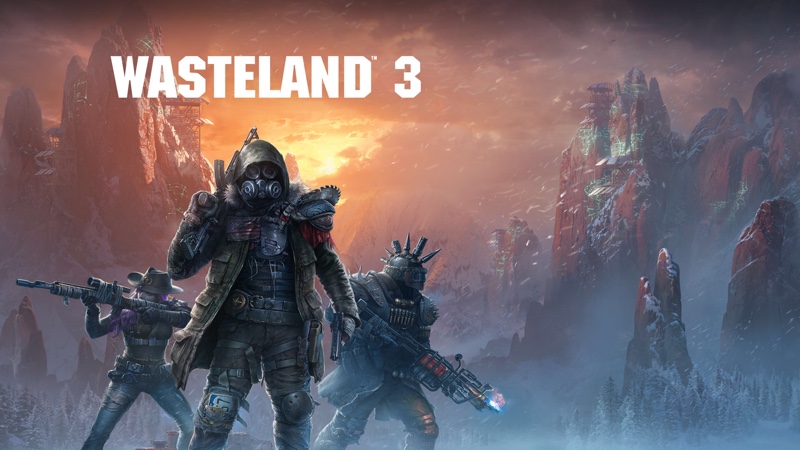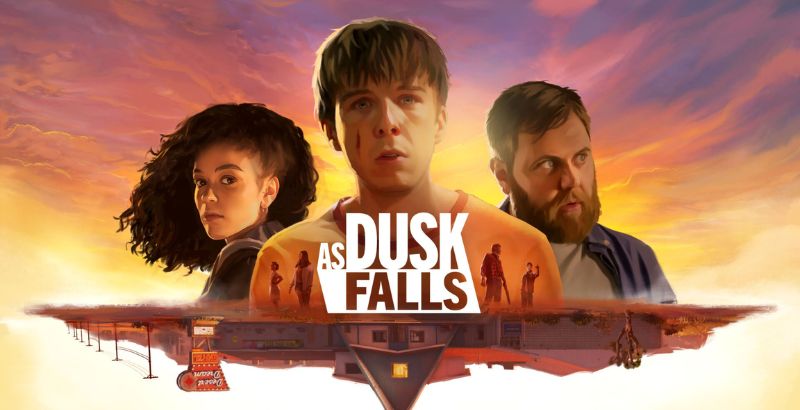
Wasteland 3 is a post-apocalyptic turn-based tactical RPG developed by inXile Entertainment and published by Deep Silver. In desperate need of supplies following the destruction of their base, the Arizona Rangers dispatch a team to far-off Colorado. They’ve been promised supplies if they help those in power restore order to their lands. But when the unit is ambushed on the way, only two survivors make it to their destination. Now, not only must they find a way to provide the services necessary to gain their much-needed supplies, they’ll have to build an entire new Ranger team in the process.
Ever since I had the pleasure to try out Wasteland 3 on the show floor at PAX East earlier this year, I’ve looked forward to checking out the final version. While a lot of the promise I experienced then is delivered in full, it certainly comes with some hurdles to get over as well. There are two pillars that do the heavy lifting for Wasteland 3. Those pillars are gameplay and character. First, let’s talk about gameplay.
The meat and potatoes of Wasteland 3’s gameplay come in its turn-based battles. Firstly, I love the flair used in transitioning from normal exploration into combat. The moment combat is triggered, a neon grid appears in the center of the screen that unfurls applying the combat gridding that dictates movement and line of sight. All in all, a small thing, but I loved the smoothness of it. No fade in or out to break the moment; it just appears and you know it’s go time.
Dictating when that grid appears is also extremely important. If you don’t initialize combat with the first shot you can find yourself caught in a horrible position, especially if the enemy goes first. Since Wasteland 3 runs on team turns instead of individuals taking turns, getting caught out in the open could be a disaster. Even if you survive the encounter, the added strain on supplies can have a hard impact on your game. So keep your eyes sharp!
Once combat has begun, all the hallmarks of the tactics genre are used to great effect. Cover is crucial, as is making sure to exploit anything in the environment you can. Explosive barrels, while timeless, are just the most obvious example. Enemy turrets can pose stiff resistance to your advance unless you can get your mechanic to its power box and disable it. No power, no problem.

How much a character can do in Wasteland 3’s combat depends on their action points. Everything from moving to shooting or administering first aid consumes action points. And at the end of the turn, if a character has leftover action points, they can carry up to two into the next round. I liked this mechanic a lot as it encourages players to be selective with what they do. Is it really worth using four action points to fire that assault rifle when you have a twelve percent chance of hitting? An action point saved is an action point earned.
But, no matter how clever one is, in the end, tactics games always come down to violence. The usual percentage chances are used to inform the player of their chances to hit their targets. Different guns take different amounts of action points to use, so having the right tool for the job is always important. Action point consumption is far from the only trait that separates the various weapon classes in Wasteland 3. Range and how well they penetrate armor also come into consideration.
All the weapons players find in their journey through Colorado also have a skill requirement attached to them. While meeting the requirement isn’t strictly necessary, it does deal result in some stiff negatives if the wielder isn’t suitably trained for their weapon. The biggest is the loss of strike charge. Strike charge builds up over combats. Every hit adds to it. Once full, a character can unleash a devastating attack. These can vary depending on the weapon, but all can turn the tide of battle if properly utilized. These aren’t ‘use them as soon as they show up’ abilities. You want to make these count.
As stated above, Wasteland 3 stands primarily on both its combat and its personality. So now it’s time to talk about that personality. And I want to be clear, when I say personality I’m not talking about the story but singular situations that reside within it and the characters. The portion of the story that I experienced was just ok. Now, there is plenty of time for that to ramp up, but it felt like the characters were what inXile was really trying to sell me on.
Everywhere I went in my travels I was met by an array of characters that ranged from quirky to psychotic. And with all the major dialogue moments fully voiced, all these characters really sell their personalities. From the members of the Monster Army, and their vampire impersonating leader to The Patriarch, self-established ruler of Colorado, every major character feels like they have quite the story behind them. And the voice talent leans into it so hard. It’s fantastic.
Along with character, the other big theme to Wasteland 3’s non-combat moments is choice. The player is constantly presented with options on how to proceed through situations. Sometimes these choices are skill-driven. For example: having a high enough mechanic skill may allow a player to bypass an obstacle, rather than having to pay an NPC for help.
A great many of the choices present are also dialogue based. Who you choose to help impacts how the game progresses. While I can’t state for certain if there is a significant payoff for these choices at the end of the game, Wasteland 3 often gives them adequate weight at the moment. It is not uncommon for the player’s choices to determine life or death for characters, and the results are not always what you might expect.
These two pillars are supported mutually by Wasteland 3 excellently executed skill system. Attributes, skills, and perks can all be learned as the player takes their team of Rangers through the game. One of the best aspects of this system is how inXile makes every attribute and skill relevant in combat. Depending on the role the player wants their character to fill in combat every upgrade could be pertinent. Even the skills that are generally left out of combat in other games, like mechanics and animal handling, can see purpose on the battlefield. For example, ranks in the previously mentioned skills provide combat bonuses against robots and animals respectively, making them more than fixing machines and taming animals outside of combat. I really loved this as it made it so I could have characters that excelled at out of combat roles, without sacrificing their combat performance.
Now let’s talk about visuals. Since Wasteland 3 utilizes the isometric top-down view, the visuals are not the center stage performer that they would be in most games. Nevertheless, the visuals do a great job of reinforcing the off tilt world the game exists in. The pig mask one of my characters has been wearing for the past seven-ish hours of gameplay is a testament to that. The visual design department did an excellent job blending the zany with that classic post-apocalyptic grunge that players are all too familiar with.
With all the positives I’ve been throwing for the past thousand plus words, you might start to think that Wasteland 3 is a flawless masterpiece. And honestly, I wish I could tell you it was. Unfortunately, this entertaining and challenging experience is mired by a lot of flaws. Some are simple gameplay elements that feel outdated at this point. Others are game crashing bugs. And they go a long way to slowing down the enjoyment that the game has to offer.
The most constant offender of Wasteland 3’s problems is the limited fast travel. While players returning to an area they have already visited can fast travel to a specific zone within it, there is no fast traveling back out. With a slow run speed and long load times, this leads to all too frequent frustratingly long treks across multiple areas with nothing to break the monotony of your slow movement speed but multiple long load screens. Given how much back and forth you often do between objectives and quest givers, it can really add up.
The other problem with movement comes at times when precision is needed. Game elements like mines are occasionally found on the map. If you have a high enough explosives stat you can disarm them. However, on more than one occasion, getting my character close enough to disarm, and not detonate, was tricky.
The other big problem I have with Wasteland 3’s game design is its often confusing systems. This is especially notable when dealing with inventory. For example, there are lots of ammo types for various weapons. Some ammo is only useable by one class of guns, while others will service multiple. And while the information is present, it’s extremely easy to miss. I spent the first several hours of my playtime wondering why my sniper kept running out of ammo. Low and behold, it was also being used by my heavy machine gunner. Given that they fire nine rounds an attack, it all made sense.
While the above problems pose a bit of a struggle to get over, they are nothing compared to how buggy Wasteland 3 is. During my time with the game, it froze and booted me to the dashboard a total of five times. I also had one combat encounter against a group of floating weapons, as the enemy character models failed to load. But the most frustrating moment I’ve experienced came when the game refused to acknowledge my possession of a key. In order to enter a specific room, I needed either this key or lock picking seven (my highest is three) so I couldn’t enter. With my progress through the area halted due to my inability to find a mission-critical object, I can’t help but wonder if it’s behind that door. I may never know.
So, when all is said and done, Wasteland 3 provides a character-filled, tactically challenging gameplay experience, providing you have the patience to get to it. Even with that said though, I certainly have enjoyed my time with the game, and I have every intention to keep on playing it. If you have Xbox Game Pass I would highly recommend checking it out. If you are looking at a full retail purchase however, make sure your love of the core concepts at work will be enough to get you over the hurdles.
Wasteland 3 is currently available on PC, PlayStation 4, and Xbox One.
Wasteland 3
-
Rating - 7.5/107.5/10
TL;DR
So, when all is said and done, Wasteland 3 provides a character-filled, tactically challenging gameplay experience, providing you have the patience to get to it. Even with that said though, I certainly have enjoyed my time with the game, and I have every intention to keep on playing it.






